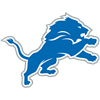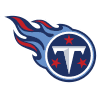This article is part of our NFL Draft series.
Three rounds of the NFL Draft are complete. 25 different skill-position players were taken, and maybe only one was as confusing as Jordan Love in the first round (sorry Eagles fans). A bevy of wide receivers ran off the board in Round 2, while Round 3 was packed with an assortment of versatile options that might not pay major fantasy dividends in their rookie seasons. Let's get into all the fantasy ramifications of Night 2 of the 2020 NFL Draft.
Quarterback
Jalen Hurts, Oklahoma
Selected 53rd overall by the Philadelphia Eagles 
I, uh, can't really explain this one. Look, I had to bend my mindset into a pretzel, but you could at least make a rationale for the Packers selecting Jordan Love in the first round. It's harder to do the same for the Eagles, who made Jalen Hurts the only quarterback selection of Day 2. Carson Wentz might have a bit of an injury history, but it's just not realistic to assume Hurts can ever unseat the 2016 No. 2 overall pick. So is he a gadget guy? His 4.59 40-yard speed sure could help in that regard. Is he going to be someone built up only to be traded to a QB-needy team? It's entirely possible, but equally impossible to predict. For a second-round pick, you have to imagine the Eagles have something planned for Hurts. I just couldn't tell you what that is.
Running Back
D'Andre Swift, Georgia
Selected 35th overall by the Detroit Lions 
The second overall running back off the board, Swift is arguably the most complete ball-carrier in this draft. A 6.6 career yards-per-carry average at Georgia emphasizes just how explosive Swift can be with the ball in his hands, largely thanks to his balance and vision, but he's also an apt pass catcher. At the very least, he's a more complete athlete than incumbent starter Kerryon Johnson, and while the two are expected to work in tandem to start, it wouldn't be surprising if Swift simply pushed the Auburn product to a firm No. 2 option in the not-so-distant future.
Jonathan Taylor, Wisconsin
Selected 41st overall by the Indianapolis Colts 
It's a curious choice to see the Colts, who traded away their first-round pick for defensive tackle DeForest Buckner, also trade up to acquire Jonathan Taylor, forfeiting a fourth-round pick in order to get the Wisconsin product, especially when Indianapolis already has 1,000-yard rusher Marlon Mack still in the fold. But with Mack's contract up upon the conclusion of the 2020 season, it seems as if the Colts have more or less made their choice for the future. It'll be interesting to monitor Mack's status in the coming months – if he's out of the equation altogether Taylor immediately becomes a top-five overall fantasy player – not just running back – thanks to his situation alone. But even if the third-year starter is there, I think Taylor is still going to be the main bell cow. Of course, there are some concerns about the 21-year-old's fumble issues, and he did compile over 900 carries in three seasons with the Badgers, but Taylor's power and speed (4.39 40-yard dash at the Combine) are unparalleled for a player of his size (5-foot-10, 226 pounds), and he was always a threat in college despite being the Badgers' only offensive weapon throughout his entire collegiate career.
Cam Akers, Florida State
Selected 52nd overall by the Los Angeles Rams 
For a former No. 1 overall prospect out of high school, Akers never quite matched the hype, averaging 4.9 yards-per-carry in his three-year collegiate career. Part of that could be attributed to Florida State's horrible offensive line, but it's fair to put at least some of the blame on Akers too. It's likely because of the similar collegiate affiliate, but on Akers' best days I see a slightly less elusive version of Dalvin Cook, which is an incredibly tantalizing comparison when you consider what he could do in the Rams offense. Even if he doesn't reach that level, Akers is immediately "the guy" on first and second down for Los Angeles. Just make sure to check in on your fellow Darrell Henderson dynasty owners – they could make very hip looking yo-yo commercials just on their offseason emotions alone.
J.K. Dobbins, Ohio State
Selected 55th overall by the Baltimore Ravens 
The rich really keep getting richer. Dobbins was considered by some to be the No. 1 running back in this class, so to see him fall to six is truly astounding. An absurdly athletic and explosive running back, Dobbins compiled 4,459 yards over 42 games with Ohio State as the main threat of an abundantly talented roster, and has proven to be a decent receiver out of the backfield to boot. Dobbins wasn't asked to block that much in college, but that hardly matters much in Baltimore. Mark Ingram appears to be blocking Dobbins' chances at a true bell cow role, but the 30-year-old would only count $1.3 million against the cap were the Ravens to cut him following the 2020 campaign. Two years might be a tough wait for rookie-league drafters, but Dobbins has the type of promise in a Ravens offense led by Lamar Jackson to be a routine top-five overall fantasy option for years to come.
AJ Dillon, Boston College
Selected 62nd overall by the Green Bay Packers 
I'm just going to skip past my personal feelings regarding the Packers draft, if only because my sanity has proven to be fleeting. Dillon makes a lot of sense in Green Bay if you focus solely, and unequivocally, on the environment he'll play in, and his hard-nosed running style. He's an absolute brute at 6-foot, 247 pounds, capable of absolutely leveling defenses similar to the Titans' Derrick Henry, or, former Packers running back, Eddie Lacy. But with the multi-dimensional Aaron Jones and emotional leader/spell-back Jamaal Williams still around, this seems like a luxury pick for a team with far too many holes to be living luxuriously. Jones' rookie contract does end following the 2020 season, so perhaps the Packers are tipping their hand regarding the future, but it's a curious decision when looking at the team's less-than-encouraging receiver depth chart.
Ke'Shawn Vaughn, Vanderbilit
Selected 76th overall by the Tampa Bay Buccaneers 
The Buccaneers entered the 2020 NFL Draft with needs at offensive line and running back, and through two days, it appears as if the team has at least provided some answers. Bruce Arians cruelly burned me last year with Ronald Jones, but I just have a hard time believing Vaughn can emerge as an obvious three-down back in a system that has actively attempted in recent years to prevent such an event to occur. Back-to-back 1,000-yard seasons at Vanderbilt is nothing to scoff at when it comes to Vaughn, but less than impressive measurable (4.51 40-yard dash) damper any sort of optimism I have for the newest name in the Bucs backfield.
Zack Moss, Utah
Selected 86th overall by the Buffalo Bills 
It's a small tragedy the Bills took Moss in the third round considering the Utah running back's comp was that of Devin Singletary, who also piled together immensely productive collegiate numbers despite uninspiring testing results. While Singletary is a bit smoother of a runner than the national media tends to acknowledge, Moss is your prototypical one-cut brusier with the balance to take hefty contact and still fall forward. A 4.65 40-yard dash at the Combine was less-than-ideal for Moss' draft stock, but interested teams weren't buying him because he was a burner anyway. As one of the first members of the Singletary fan club, I'm a bit dejected to see Moss fall where he did, but the second-year back should still be the guy who gets first crack at the starting job, which, as we saw last year, is all he really needs to make a difference in fantasy.
Darrynton Evans, Appalachian State
Selected 93rd overall by the Tennessee Titans 
Evans and his 4.41 speed should be a perfect complement to Derrick Henry, but that doesn't matter much from a fantasy sense when the Appalachian State product likely won't see more than 100 carries a season. Evans is actually a compelling handcuff option for Henry owners even in dynasty leagues considering the two-year starter could fill in as a potential three-down back if pressed into action. That would be the worst of worst case scenarios for Tennessee however, and while Evans is certainly physically gifted, he's probably not well-equipped to take the sort of pounding required to be a starting running back of the Titans. Then again, nobody in the NFL save for Henry really is.
Wide Receiver
Tee Higgins, Clemson
Selected 33rd overall by the Cincinnati Bengals 
Higgins marked the first of three consecutive skill-position players selected to begin the second round, but it's fair to say that had Higgins participated in the NFL Combine, he could very well have been a first-round receiver. Instead, he'll land in Cincinnati along with No. 1 overall pick Joe Burrow, but at least in the immediate future it's hard to necessarily see where Higgins can become a fantasy asset. A.J. Green, Tyler Boyd, John Ross, Giovani Bernard and Joe Mixon are all around, and while Higgins' prototypical body (6-foot-4, 214 pounds) sure looks like an heir apparent to Green, the 31-year-old is still on the team, and should do basically all the same things you'd want Higgins to do. Dynasty leagues should be ecstatic about his landing spot, but an immediate return on investment just feels unlikely to occur.
Michael Pittman, USC
Selected 34th overall by the Indianapolis Colts 
Pittman piled together 1,275 receiving yards and 11 touchdowns in a breakout senior campaign with USC, but had just 1,162 yards and eight touchdowns in his previous two collegiate seasons thanks to a number of highly-rated options above him commanding attention. A lanky and explosive athlete, Pittman provides something completely different to the Colts wide receiver depth chart, and feels like a prototypical fit alongside T.Y. Hilton and Parris Campbell. That being said, Philip Rivers isn't exactly known as a deep-ball specialist at this point in his career, likely hindering Pittman's best asset as a jump-ball specialist. Pittman isn't as talented as the trio of Henry Ruggs, Jerry Jeudy or CeeDee Lamb, but he's going to be in the best position to have fantasy success. And availability is the best ability.
Laviska Shenault, Colorado
Selected 42nd overall by the Jacksonville Jaguars 
Shenault was projected as a first-round pick following his 2018 season in which he posted 86 receptions and 1,011 receiving yards to go along with six touchdowns in his sophomore campaign with Colorado, but a disappointing junior season, recording just over 750 receiving yards across 11 games, sent him tumbling into the second round. I like his ability to make plays after the catch – particularly with Gardner Minshew under center, who essentially is a sixth-round version of Derek Carr – but I'm not convinced the offensive system as a whole benefits Shenault. DJ Chark emerged as a fantasy darling this past season in large part because he's a big-bodied deep threat, but Dede Westbrook hasn't exactly thrived despite being a more consistent collegiate prospect. Shenault also had core muscle surgery directly after the NFL Combine, but has already been deemed fully healthy from an independent doctor earlier last week.
KJ Hamler, Penn State
Selected 46th overall by the Denver Broncos 
Hamler becomes the second receiver to join Denver in this draft, adding yet another level of speed and athleticism that, save for tight end Noah Fant, simply was lacking in 2019. I'm more bullish on Hamler's long-term success than most of the RotoWire office, though. Hamler's size (5-foot-8, 178 pounds) is a bit concerning to me when considering a long-term fantasy asset – players that small simply haven't been major factors unless you have the speed of Tyreek Hill, or quickness of Tarik Cohen. The biggest winner in this pick might be quarterback Drew Lock. Everyone keeps talking about Daniel Jones as a surprising fantasy quarterback next season, but I think I'd take Lock at this point with the weapons Denver has accumulated this offseason.
Chase Claypool, Notre Dame
Selected 49th overall by the Pittsburgh Steelers 
Claypool's positional distinction might be a major fantasy sticking point. The big-bodied pass catcher made waves at the Combine – first by refusing to do tight end positional drills, and then by posting the fastest 40-yard dash for a player weighing more than 235 pounds since Lions legend Calvin Johnson. Make no mistake, the return of Ben Roethlisberger (elbow) means the Steelers will once again transition to their pass-heavy ways; I'm just not convinced the Notre Dame product is better than JuJu Smith-Schuster, James Washington or Diontae Johnson. Simply put, Claypool never flashed the 4.42 40-yard speed on film, and his large frame predictably removes the sort of quickness you'd typically expect of a Steelers wide receiver. Claypool might be better than Eric Ebron or Vance McDonald though, and a second-round pick almost assures he'll play regardless of whether he actually is or not.
Van Jefferson, Florida
Selected 57th overall by the Los Angeles Rams 
Jefferson will be a 24-year-old rookie coming off surgery to repair a fracture in his right foot. If you're confused as to why he was widely assumed to be a Day 2 selection, join the club. It certainly wasn't because of his total collegiate numbers, as Jefferson never posted more than 660 receiving yards in any given collegiate campaign. There are definitely times in which Jefferson jumps off the tape – he can do things after the catch that surprise you, and he sure plays bigger than his actual size (6-foot-1, 200 pounds). It's just tough to imagine Jefferson is anything better than the fifth receiving option in a given play – hardly something that makes you feel comfortable as a potential fantasy owner.
Denzel Mims, Baylor
Selected 59th overall by the New York Jets 
NFL teams evidently weren't as impressed with Mims' tremendous NFL Combine showing (4.38 40-yard dash, 38.5-inch vertical and 131-inch broad jump) as the national media was. I know the wide receiver class was historically deep this year, but it's still somewhat shocking to see teams devalue someone this athletic. That might not matter much for fantasy purposes considering the 22-year-old walks into arguably the easiest path to a potential starting spot, but the curse of head coach Adam Gase looms over any sort of optimism. Jamison Crowder and Breshad Perriman likely have their roles secured, but Mims' ability to high-point passes could make him a verifiable threat even as the No. 3 pass-catcher. He might have been drafted at the back end of the second round, but his fantasy potential this season is right in line with the six other receivers drafted Thursday.
Antonio Gibson, Memphis
Selected 66th overall by the Washington Redskins 
Flexibility was the name of the game when it comes to skill position players selected in the third round. Gibson had just one season of production with Memphis, but he posted over 1,000 total yards – 735 receiving and 369 rushing – despite touching the ball just over 70 times. It's not exactly an actionable selection, but if Gibson gets some sort of multi-positional fantasy designation, he could do something like what deep-league fantasy owners hoped for with Bills' wide receiver Duke Williams last year. I'm not convinced he'll threaten Derrius Guice as a legit starter out of the backfield, but the team utilized Chris Thompson in a very fantasy-friendly way.
Lynn Bowden Jr., Kentucky
Selected 80th overall by the Las Vegas Raiders 
It's tough to really pigeonhole how the Raiders will use the current Paul Hornung award winner. He was technically Kentucky's starting quarterback last season after starter Terry Wilson went down with a season-ending injury, but primarily operated as runner, accumulating almost 1,500 rushing yards while also recording 348 receiving yards. Versatility matters in the NFL, but not so much in fantasy, especially when Bowden joins a deep Raiders receiving group that got deeper just one pick later.
Bryan Edwards, South Carolina
Selected 81st overall by the Las Vegas Raiders 
With their second of back-to-back picks, the Raiders selected a much more conventional wide receiver in Edwards. The South Carolina product likely would have been a Round 2 pick at minimum if not for a broken foot which forced him to miss the NFL Combine. Edwards was arguably a better player at South Carolina than current 49ers starter Deebo Samuel, so to see him fall to a team who selected three pass catchers in the first three rounds has to be a frustrating blow for dynasty owners, but Edwards has the talent and size (6-foot-3, 212 pounds) to emerge as a reliable outside threat regardless of the circumstance.
Devin Duvernay, Texas
Selected 92nd overall by the Baltimore Ravens 
This is arguably one of my favorite Day 2 picks, only followed by the Ravens selection of J.K. Dobbins in the back-end of the second round. A former track star, Duvernay led the nation in receptions with Texas last season, good for 13.1 yards per catch to go along with 10 total touchdowns. Most of that damage was done out of the slot, which shouldn't be much of a problem considering Willie Snead was the team's primary slot option. Duvernay's main knock is lack of obvious route-running skills, but it's hard for me to believe someone can lead the nation in receptions and "not" be able to run routes at the NFL level. However, between that and his inability to really go up and get passes (being 5-foot-10 will do that for you), you can make an argument as to why he fell as far as he did. The Ravens will be a majority running team for however long Lamar Jackson is under center, but with Marquise Brown already in the fold, Baltimore has compiled one of the most explosive offenses in the NFL, and Duvernay should be a major part of that equation.
Tight End
Cole Kmet, Notre Dame
Selected 43rd overall by the Chicago Bears 
I wish I had the same type of commitment to anything in my life as the Bears do trying to find a relevant tight end. The sheer perseverance despite years of failures, whether it was Adam Shaheen in the second round three years ago, or a $32 million contract to Trey Burton two seasons ago, or heck, a somehow more idiotic two-year, $16 million contract to a washed-up Jimmy Graham just this past offseason? Gotta make sure you take another tight end to add to the nine, yes NINE, other ones already on your roster. Kmet was the best tight end in this class essentially by default, and considering the compilation of tight end skeletons currently accumulating in the Bears' closet, I have little faith this one will be much different.
Devin Asiasi, UCLA
Selected 91st overall by the New England Patriots 
One of two tight ends the Patriots traded up for in the deep recesses of the third round, Asiasi was a one-year standout with UCLA, accumulating 44 receptions, 641 yards and four touchdowns while proving to be a versatile blocker and pass-catcher. Here's all I know – the Patriots love tight ends, and use them in a lot of different ways. If you have any idea how the Patriots will operate their offense this year, you probably should be applying for a front office job in the NFL instead of reading this article.
Josiah Deguara, Cincinnati
Selected 94th overall by the Green Bay Packers 
Deguara is your typical fullback/second-string tight end that can do plenty of things on offense, but nothing extraordinarily well. A 4.60 40-yard dash at the Combine is interesting, and reinforces his positive two-year production at Cincinnati, but there's a reason this tight end class wasn't highly regarded. At the very least, Deguara sure seems to fit the mold head coach Matt LaFleur wants as he continues to build the Midwest version of the Titans.
Dalton Keene, Virginia Tech
Selected 101st overall by the New England Patriots 
The Patriots doubled down at tight end in the third round with the selection of Keene, once again trading up to get their guy. There are plenty of unknowns surrounding this offense, too many to really give any sort of reasonable fantasy assessment of Keene's potential.
Adam Trautman, Dayton
Selected 105th overall by the New Orleans Saints 
The Saints put an exclamation point to the theme of the third round, trading up for another versatile tight end in Trautman. The three-year starter joins the NFL as the highest ever drafted Dayton player, and while his 4.8 speed doesn't necessarily scream impact player, the Saints have done more with less when it comes to the tight end position. Ironically, Trautman's positional flexibility screams something similar to Taysom Hill. That's not enough to get drafted in all but the deepest of dynasty leagues, but it's at least something worth monitoring for the future.












